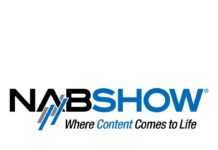
We go to conferences to hear seminars about it. Countless people blog about it. And more than a few water cooler confabs have taken it up as the subject of the moment. We study the technology for clues. Follow the relevant legislation. And we wonder if financial statements offer the biggest clues. We’re talking about the future of radio, of course. And it’s our good fortune to have broadcast attorney John Garziglia to give us a clear peek through the keyhole.
Radio Ink asks: With the New Year just around the corner, it’s time for a little crystal ball gazing. What about our radio industry? What do you see by peering into the future?
John Garziglia says: 21st century radio has arrived. We just have not noticed it yet.
Thinking back though, few noticed when FM made its entry a half-century ago. 21st century radio will be audio, video, and graphics content-on-demand on mobile devices.
I am excited about the potential for radio broadcasting from the “Mobile TV” technology developed by the Open Mobile Video Coalition which allows for robust delivery of both audio and video on demand. It is worthwhile for radio broadcasters to read two recent releases from the OMVC. Start with the OMVC Press Release on Non-Real-Time Content. Then read the underlying document titled OMVC Non-Real Time Mobile DTV Use Cases. Neither is lengthy. Imagine the possibilities several years from now if thousands of portable devices and car radios have the capabilities described in these articles.
The initial staggering realization about TV today is to question the sanity of those who designed today’s 8-VSB and ATSC DTV standard and utterly failed to consider that consumers might like to receive on-demand video and audio in portable and mobile devices. That is a failure of imagination and design that one day will be looked back upon in amazement.
But I digress. We all can agree, I believe, that the future of radio is content-on-demand.
The central question is what technical platform will deliver mobile content-on-demand. The analog and digital iterations of today’s radio broadcasting technology cannot deliver mobile content-on-demand. While cell-phone-based 3G and 4G do deliver mobile content on demand, a cell phone infrastructure that currently cannot deliver reliable telephone service to much of the nation is a doubtful platform for future massive data delivery. Also, there is the significant cost issue of that 3G and 4G data delivery.
Broadcasting is the only delivery mechanism in our foreseeable future that has the capacity to deliver substantial amounts of unwired content to mobile mass audiences. The OMVC Mobile TV broadcasting platform may be the combined audio and video platform that radio broadcasters in particular have been waiting for.
Why would TV broadcasters not themselves take advantage of this new platform? Some may, but many in the TV industry are stuck in the mentality of program delivery to consumers when and how the TV station and video content owners want it, not when and how consumers want it. This attempt to maintain the status quo is illustrated by the way the TV industry strikes out against every new DVR/PVR scheme, and just about any other new content delivery scheme that attempts to allow consumers to use its media on demand.
I see radio broadcasters as more agile and sure-footed than TV broadcasters when it comes to delivery of content paired with advertising messages that attract consumers. Radio has been waiting for a mobile delivery platform such as the OMVC Mobile TV platform. OMVC Mobile TV delivers audio along with any kind of video. So, “radio with pictures,” including album art, station logos, and more, is no problem for the OMVC Mobile TV platform.
So, how does this affect radio broadcasters? In a nutshell, the existing TV spectrum and TV licenses may be the new platform for what we now know as radio broadcasting.
Forward thinking radio broadcasters may want to consider thinking about the acquisition of a TV station in the future. Yes, the FCC rules now prohibit many radio-TV cross-ownership combinations, but that is likely to change.
For smaller radio markets, rather than a full-power TV station, there is the possibly of acquiring a digital LPTV station, many of which have substantial power. Many LPTV stations are there for the taking as almost none have ever made any money (sort of like FM in the beginning), and the radio-TV cross ownership rules do not apply to LPTV ownership.
There are, of course, substantial risks to acting on my prognostication. Many LPTV stations may be re-allocated out of existence with the upcoming TV spectrum auction. There will be substantial expenditures keeping a TV station on the air until substantial numbers of Mobile TV devices are in listeners’ hands. Ultimately, there could be too many stations doing Mobile TV technology, and owning a TV station early may not represent an advantage for early adopters. And, of course, this OMVC Mobile TV technology could be one of tomorrow’s failed technologies.
But, if OMVC Mobile TV devices begin to proliferate in large numbers, I believe that has the potential to be an entirely new business platform for radio broadcasters. It will be an on-demand broadcasting platform that melds audio and video information, entertainment, and advertising content potentially delivered to an entire market population without data restrictions or service drop-outs. That on-demand audio, video, and graphic content delivery will very much be 21st century radio.








